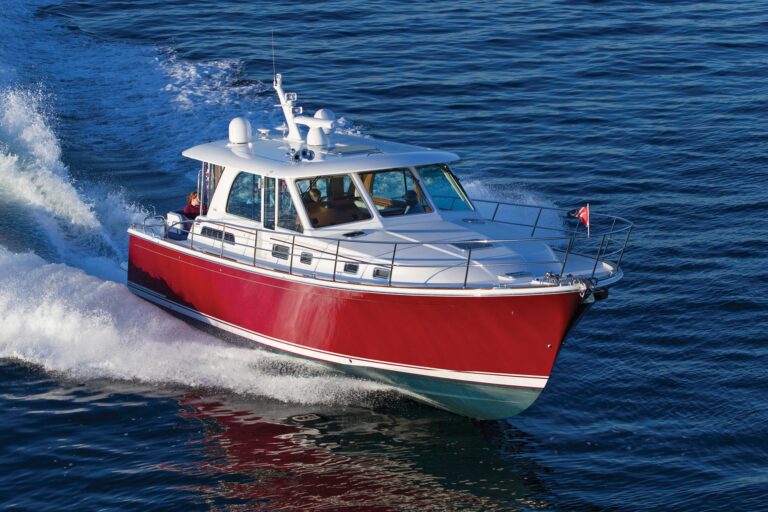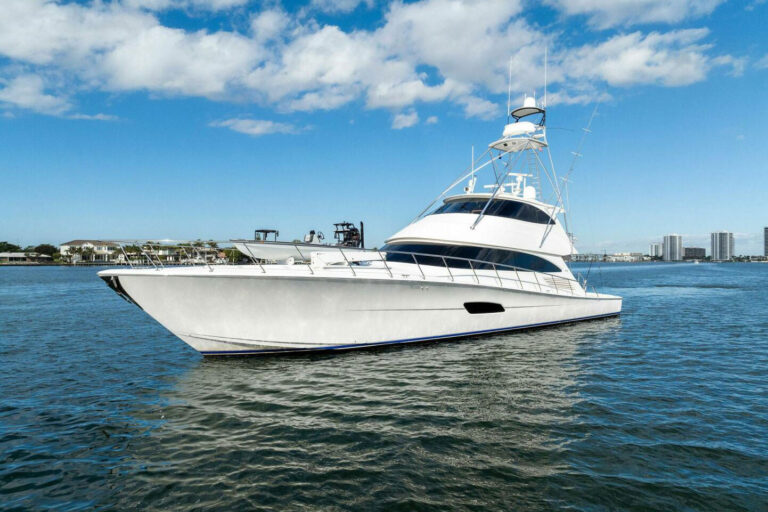Repowering is something that can end very well or very badly. The outcome depends in large part on the objective, and how you go about achieving that objective. An engine gone bad is often the spark for repowering, but there is usually much more involved than just the engine itself.
For instance, do you stick with the same fuel— gas or diesel—or do you switch? Do you keep the same horsepower? And do you take the opportunity to upgrade other engineroom equipment and systems? There are many factors to consider to make an informed decision. It is vital to remember that you should be looking not just at the engine, but at the entire propulsion system, sometimes even the boat as a whole.
Replacing one engine with another of the same fuel, horsepower, and rpm is the simplest and least expensive solution—and it is usually the best, too. Assuming the rest of your propulsion system is in order will mean you don’t have to modify or replace any of the other components. As an added benefit, many modern engines can supply the identical horsepower as the original installation in less space, with less weight, better fuel efficiency, and cleaner operation. Most have electronic features that also enhance monitoring, control, maintenance, and operation. In general, modern diesels offer at least 10-percent better fuel efficiency than their older counterparts.
Switching from gas to diesel will be more expensive, but it is not a huge deal as long as the horsepower stays in the same range. Most diesels top out at a lower rpm than equivalent gas engines, resulting in higher torque at any given horsepower, so a change in the reduction gear, shaft(s), and prop(s) may increase costs.
Though it is seldom done, you may want to consider a replacement engine of slightly lower horsepower, combined with a new, more efficient propeller. Remember, it is not the engine but the propeller that actually pushes the boat through the water. A modern custom prop, optimized for your particular installation will cost a bit more, but properly specified, it can reduce your horsepower requirement and fuel burn by at least 10 percent. And it’s very possible you won’t lose any speed at all.
Repowering with significantly increased horsepower is tempting. Unfortunately, it is the most expensive option and the one most fraught with potential for disaster. Consider all the modifications that may be dictated by the increased power. These can include changes to and/or replacement of the fuel tanks, fuel filters, fuel piping, batteries, air intakes and blowers, cooling water pipes and strainers, exhaust piping and mufflers, reduction gears, propeller shafting, struts, bearings, and propellers. Engine beds and other structural components may require modification, and it may be necessary to install new rudders and steering gear.
The more you increase horsepower, the more likely you are to have major problems. Even if you have the bucks and simply cannot resist a boost in horsepower, I would not consider increasing it more than about 20 percent without consulting a naval architect or marine engineer. Sometimes to transfer all that power into the water it is necessary to install props with significantly more diameter, and their blade tips run closer to the hull, setting up vibrations. Some yachts have hull shapes that are incompatible with the increased speed, so dynamic instability—porpoising, bow diving, chine walking, or laying to one side—becomes a problem. Worst of all, some boats were not designed and built to handle the increased structural loads, and they can begin to crack and come apart after only a few weeks. None of these are desirable outcomes, especially when you’ve spent six or seven figures for all that extra power.








